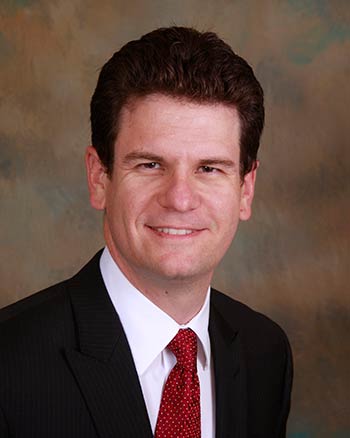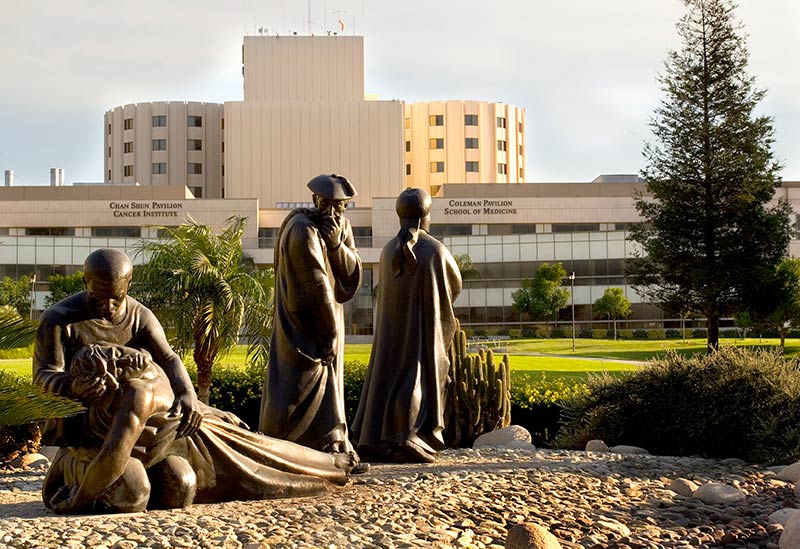When the founders of the Loma Linda University Medical Center in California laid the foundation, their purpose was somewhat paradoxical. Christians to the bone, and Adventists on top of that, they echoed the words attributed to the great reformer Martin Luther: “Even if I knew that tomorrow the world would go to pieces, I would still plant my apple tree.”
For these founders, the ‘tree’ was replaced with an institution to train medical missionaries, meaning doctors and nurses who would not only assist the physical healing of those who had diseases, but would also contribute to their spiritual healing. The delay in Christ’s return has caused this tree to bear fruit which, today, fascinates even those who have cultivated it.

Extensive long-term research is being conducted, under the umbrella of the University’s Medical Centre and funded by the American government. It is divided into three main studies, each with its sub-studies, on the effects of Adventist principles on health. The first study, which looked at the effects of Adventist sanitary principles on health, began in 1960 and had more than 22,000 participants, mostly from California. After 5 years of official research and 25 years of unofficial continuation, the study revealed that Adventist men live 6.2 years longer than those of other denominations, while women have an advantage of 3.7 years.
Moreover, the death rate from any type of cancer was 40% lower for Adventist men and 24% lower for Adventist women. The percentages were compared to statistics from the American Cancer Society. Broken down, the Adventist population had a 79% lower risk of developing lung cancer than the general Californian population. The risk of colorectal cancer was 38% lower, breast cancer 15% lower, and the risk of coronary heart disease 34% lower in men and 2% lower in women.
This data led researchers to try to discover which Adventist habits provided such protection. Therefore, a second study was conducted, also in the California area, which highlighted five of the healthy habits promoted by Adventists throughout the existence of the church, which can increase life expectancy by as much as 10 years: abstinence from tobacco; plant-based nutrition; regular, weekly consumption of oilseeds; regular exercise; and maintaining normal body weight.
Thus, it was found, for example, that the risk of suffering a heart attack decreases by up to 50% if we eat nuts several times a week and by 45% if we eat wholemeal bread instead of white bread. Drinking 5 or more glasses of water daily can also contribute to a 50% reduction in the risk of developing coronary heart disease while consuming soy milk more than once a day could reduce the risk of prostate cancer by 70%. Even something as simple as regular consumption of tomatoes leads to a 40% reduction in the incidence of this type of cancer.
These findings, however, only whetted the researchers’ appetite to delve deeper into the effects of Adventist lifestyle habits. Thus, in 2002, a study was launched on a much wider range of Adventist subjects, both in the United States and in Canada. The study is still ongoing. More than 96,000 participants were included in this study, which has already succeeded in proving that vegetarianism has a substantial ability to protect against obesity, type 2 diabetes, and the metabolic disorders that make up metabolic syndrome.

We wanted to find out more, so we went straight to the source, to talk to one of the leading researchers involved in this study, Dr Michael J. Orlich, director of the residency program in preventive medicine at the Loma Linda University School of Medicine. Dr Orlich has a dual formal background in family medicine and preventive medicine, and is currently a PhD student in epidemiology. Before coming to Loma Linda, he worked at the NEWSTART Clinic of the Weimar Centre for Health and Education, and he is currently investigating the impact of certain lifestyle factors on mortality. What follows is an interview with Dr Orlich.
Dr Orlich, what exactly is the mission of the Department of Adventist Health Studies (AHS) where you work as a researcher?
We use the unique aspects of the Adventist population to try to understand and find out what eating habits could have long-term consequences on the lives of all people. Adventists are a unique population, in the sense that they generally have a lifestyle that is largely different from the typical lifestyle of the majority: a very low smoking rate, a very low rate of alcohol consumption and a high proportion (compared to the general population) of members who have a vegetarian or an almost vegetarian diet.
For researchers, this population is very attractive because, with its help, we can study the effects of certain eating habits and lifestyles, such as meat consumption or vegetable consumption, without the results being influenced by tobacco or alcohol consumption.

When you say “for researchers” I understand you don’t strictly refer to Adventist researchers. To what extent are the results of AHS studies of general interest?
The current study was funded by the National Cancer Institute, which is interested in finding out if there are links between certain foods and certain types of cancer. Obtaining these funds is a competitive process: an application is submitted, which is then reviewed by experts in the field. So the success of funding is a guarantee of the interest of the scientific community for the results of our research.
Due to the significant proportion of vegetarians among the Adventist population, the study of the health effects of vegetarian food has been able to contribute greatly to what is known today, scientifically, about the effects of vegetarianism. The interest of the scientific community was therefore significant. That is why our study still probes information 50 years after its start.
Although 50 years have passed, from time to time a methodological echo can be heard. How do you respond to critics who condemn the study for sabotaging its own findings because it is based on data regarding Loma Linda residents, which may not generate a long-lived population, and only attract it—being an attractive area for seniors—therefore only having the appearance of an epicentre of longevity?
Our subjects are spread throughout the United States. Moreover, many of them are Canadian residents. The study indeed tends to focus especially on areas where there are larger populations of Adventists. For example, there are a relatively large number of Adventists in south-eastern California, but the same is true in South Florida. Overall, we have participants from all 50 states.
Loma Linda has indeed been considered, over time, a hotspot of longevity—a “blue zone”, as it was called. But this is just a shortcut that journalists used to refer to our first study, which had about 30,000 participants across the state of California. That study focused on the longevity of Adventists, but our current study has a three times larger base of subjects across the United States and does not attempt to make estimates of longevity, but only to analyse the impact of certain factors on mortality, which is related to longevity, but not the same. Our results are relevant for the entire Adventist population, not just locally, for Loma Linda.
How do you relate, on a personal level, to these studies? Did they influence your life in any way?
When I was young—I think I was about 13—my father had a heart attack and had to undergo several coronary surgeries, which made him change his diet to try to prevent future heart attacks. I think this motivated me to get closer to the field of health, as well as books on lifestyle, nutrition, and fitness, which I read during that period.
I remember reading in the Adventist Church publications some of the first results of the AHS 1 study, which convinced me to become a vegetarian myself. Then I was vegan for 10 years (now I’m lacto-ovo-vegetarian). Then came the discoveries about the beneficial effects of nuts (oilseeds), which I intentionally include in my diet today. And I’m always aware of what my colleagues are discovering, especially in the area related to the effects of certain foods in cancer prevention.
It is important to admit that our study, like any other study, has its limitations. That is why it is a challenge for me, after reviewing a huge volume of literature on nutrition, health, and lifestyle as a whole, to be able to find how these studies can be harmonized, to make the best possible choices. So yes, these studies have had a considerable impact on me and will probably continue to do so as I move forward.
Is it very difficult for a scientist to find the answers?
It is a challenge even for researchers in the field, for those who work in the field of nutrition, and for doctors, to answer questions about how specific aspects of my diet will affect my risk of cancer or other diseases over dozens of years. It is very difficult to develop studies that answer these questions in a conclusive, definitive way.
There are many methodological challenges, so this tends to be quite frustrating for everyone, but also for the scientific community, which seems to get many conflicting results. But many things are clarified over time, and today we have certainties about many of the important choices we can make for our health that can have a significant impact. However, there are still things about nutrition and health that we do not know, and questions for which we do not have a conclusive answer yet… questions about the effects of specific foods, about specific components of certain foods.

In Romania, in some circles, there is a discussion about a new approach to food, based on cutting out sugar from any source: both processed and that which we can get by eating fruit, or fructose. What do you think is the scientific basis for such a recommendation and how do we relate to it?
There are many trends in food and fad diets that are promoted in the media. Some may be better than others. Many of them are perhaps better than the standard, poor quality diet adopted in the West. But the issue of sugar consumption has certainly started to be looked at more closely lately. Several publications have recently brought to light the fact that, a few decades ago, the sugar industry tried to influence certain scientific researchers to focus their research more on the impact of high-fat diets, so that the messages that reached the public sphere would focus more on this aspect of nutrition.
Lately, however, more and more scientists are focusing on the effects of sugar consumption. And I think it’s clear to everyone that the general diet adopted in the United States has a major problem with excess sugar—at least from the perspective of accumulating empty calories, but possibly also as a result of the fructose metabolism system. “Table” sugar, which we consume regularly, is made up of glucose, fructose and sucrose.
Fructose occurs naturally in fruits, is a sweet compound, and is metabolized in a different way than glucose. It can lead to fat deposits in the liver and can contribute to the development of certain insulin resistance, causing problems with lipid and cholesterol metabolism. Certain problems are associated with an excess of fructose. However, if we leave these aside, the intake of empty calories is a major problem that leads to obesity and its associated diseases. Therefore, reducing sugar intake is, for most people, a very commendable goal.
Regarding fructose, however, there is a significant difference. We would have to eat a lot of apples to equate the amount of fructose found in a chocolate bar or an ice cream. Fruit juice may indeed cause problems. Especially if consumed in large quantities. A little fruit juice at a meal will probably not hurt most people. However, many people have been educated to consume fruit juice as a substitute for water, and that can mean a very high dose of fructose.
However, promoting the avoidance of fruit intake is not a good idea. For most people, eating fruit is part of a very healthy diet that can be compatible with losing weight, avoiding diabetes, and all the other issues that people worry about when it comes to sugar consumption.
Avoiding added sugars, table sugar, and keeping away from sugary drinks and foods with a very high sugar concentration, such as fruit juice, is a very good idea for most people. In conclusion, added sugar is the issue to focus on, not natural fruit sugar. In the United States, there is even talk of segmenting ingredient sheets so that added sugars are highlighted and people can better identify them, in order to avoid them.
This measure will certainly help the most informed. But how would you advise people without scientific knowledge to sort out nutritional values, given the huge amount of information we are bombarded with today?
You know how it is; people have been trying to live healthily and eat healthily for thousands of years, even before there were scientists who wanted to establish certain rules. What is very useful is a certain dose of common sense.
Things that have been recommended for a long time or on a large scale help tremendously, simple things like avoiding overeating, checking your portions, keeping your weight under control, exercising regularly, eating food that is as wholesome as possible or as close to its natural state as possible, avoiding highly processed foods such as those that are all around us; eating as much variety of whole foods as possible: fruits, vegetables, oilseeds, and whole grains. All this helps to maintain a very healthy diet.



















